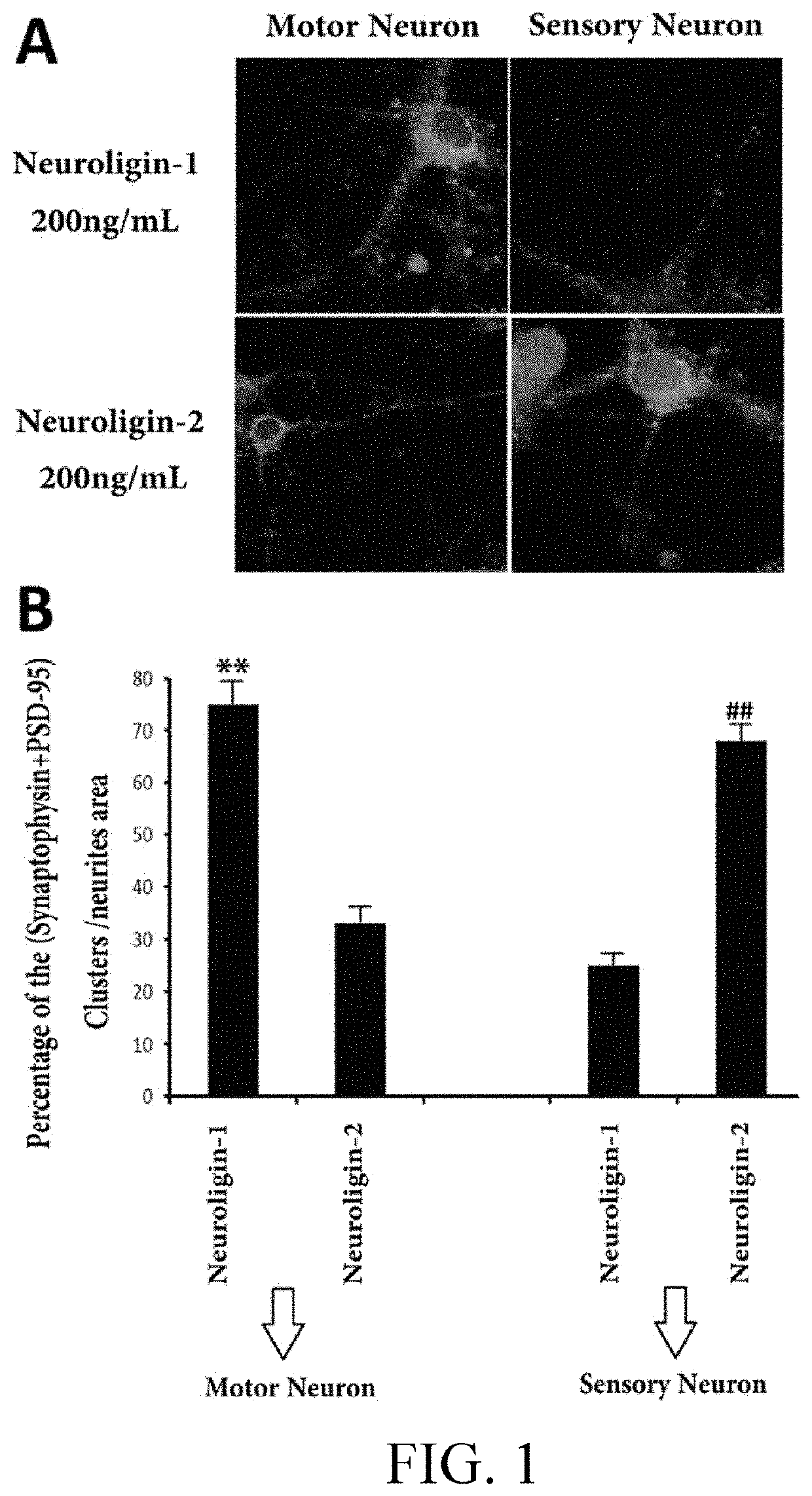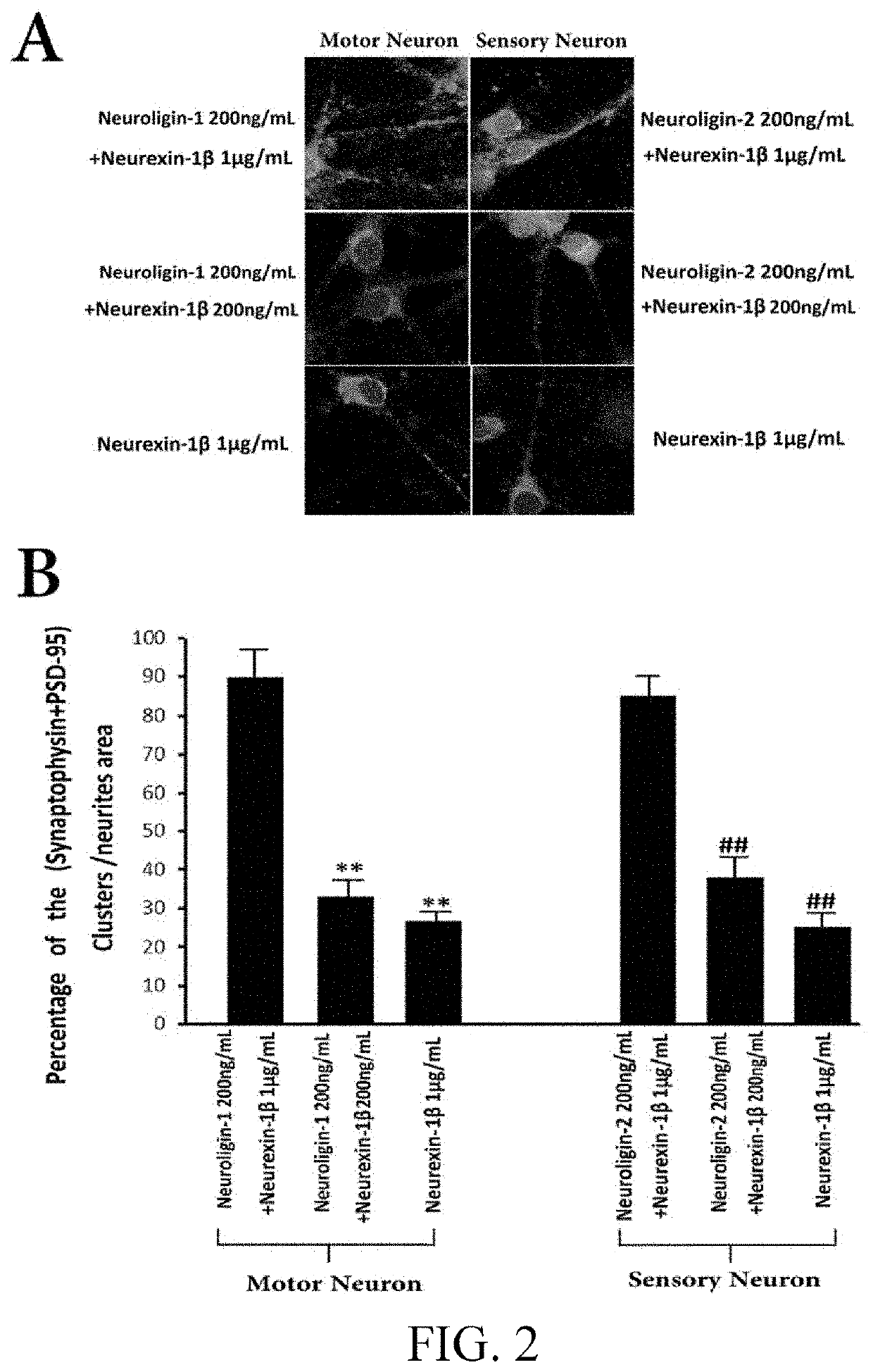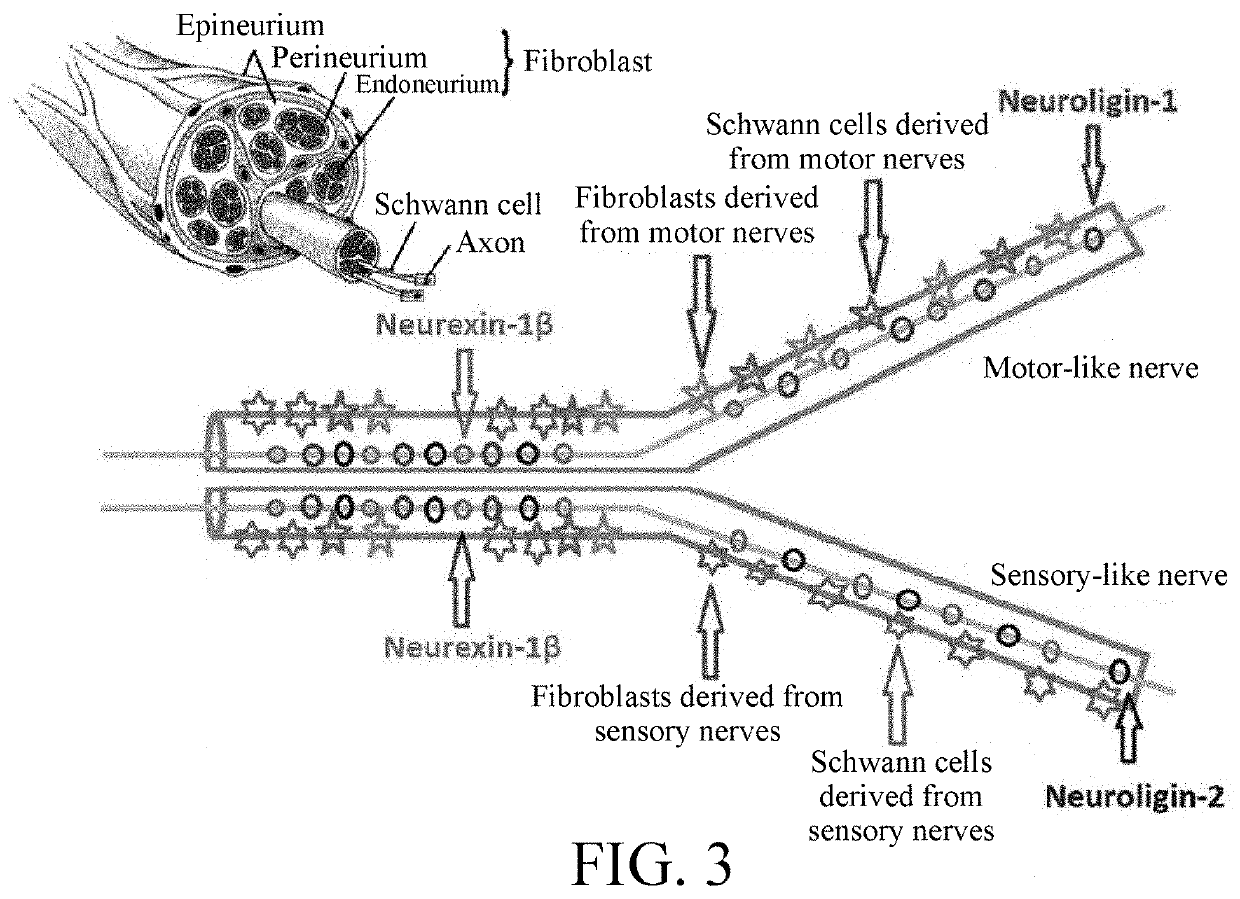Construction and application of differentially regulated tissue-engineered nerve grafts
- Summary
- Abstract
- Description
- Claims
- Application Information
AI Technical Summary
Benefits of technology
Problems solved by technology
Method used
Image
Examples
embodiment 1
Promoting Effects of Neuroligin-1 and Neuroligin-2 on Synapses in Motor and Sensory Neurons
[0038](1) Culture of motor neurons: a SD rat pregnant for 15 d-16 d was dissected under an anatomical lens to remove ventral tunica, dorsal root ganglia and blood vessels of a spinal cord, and a ventral spinal cord of a fetal rat was carefully separated and placed in a petri dish containing ice-cold anatomical fluid. A tissue piece having a size of 0.5 cm3 was cut by a microscissor and then transferred to a 15 mL centrifuge tube. After adding 0.25% trypsin and 200 U / ml DNase, digestion was performed at 37° C. for 30 min, and then digestion was terminated by adding DMEM+10% FBS. Centrifugation was performed at 1000 r / min for 5 min, and supernatant was discarded. 5 mL of Optiprep separation solution was added, and density gradient centrifugation was performed at 3000 r / min for 15 min. Then liquid in the centrifuge tube was divided into 3 layers, wherein the middle layer contained spinal motor ne...
embodiment 2
Promoting Effect of Neurexin-1β in Combination with Neuroligin-1 or Neuroligin-2 on Synapse Formation
[0043]Motor neurons and sensory neurons were cultured for 10 d in vitro and then divided into groups as follows. Neurexin-1β in combination with Neuroligin-1 or Neuroligin-2 was added to motor neuron and sensory neuron media, respectively:
[0044]Motor Neuron Group:
[0045](1) Neurexin-1β (final concentration of 200 ng / mL)+Neuroligin-1 (final concentration of 200 ng / mL);
[0046](2) Neurexin-1β (final concentration of 1 μg / mL)+Neuroligin-1 (final concentration of 200 ng / mL);
[0047](3) Neurexin-1β (final concentration of 1 μg / mL).
[0048]Sensory Neuron Group:
[0049](4) Neurexin-1β (final concentration of 200 ng / mL)+Neuroligin-2 (final concentration of 200 ng / mL);
[0050](5) Neurexin-1β (final concentration of 1 μg / mL)+Neuroligin-2 (final concentration of 200 ng / mL);
[0051](6) Neurexin-1β (final concentration of 1 μg / mL).
[0052]The culture was continued for 24 h. Results of immunocytochemical stainin...
embodiment 3
Construction of a Differential Tissue-Engineered Nerve According to the Present Invention
[0055]1. Preparation of Sustained-Release Microspheres Containing Neuroligin-1, Neuroligin-2 and Neurexin-1β Recombinant Protein
[0056]Polylactic acid-glycolic acid copolymer (PLGA, a molar ratio of lactic acid to ethanol was 53:47, and molecular weight [MW] was 25 kDa). PLGA microspheres were prepared by a water / oil / water multiple emulsion method. 100 mg of PLGA was dissolved in 1 mL of dichloromethane, and then emulsified into 3 mL of a 7% (w / v) poly(vinyl alcohol) (PVA) aqueous solution, and ultrasonicated for 1 min to prepare an emulsion of a first step. Then, the above solution was added to 50 mL of a 1% (w / v) poly(vinyl alcohol) (PVA) aqueous solution (containing 2% isopropanol), and ultrasonicated again for 3 min to form an emulsion of a second step. The emulsion of the second step as mentioned above was slowly stirred overnight at room temperature, and the residual dichloromethane was ful...
PUM
| Property | Measurement | Unit |
|---|---|---|
| Ratio | aaaaa | aaaaa |
| Efficiency | aaaaa | aaaaa |
| Mass ratio | aaaaa | aaaaa |
Abstract
Description
Claims
Application Information
 Login to View More
Login to View More - R&D Engineer
- R&D Manager
- IP Professional
- Industry Leading Data Capabilities
- Powerful AI technology
- Patent DNA Extraction
Browse by: Latest US Patents, China's latest patents, Technical Efficacy Thesaurus, Application Domain, Technology Topic, Popular Technical Reports.
© 2024 PatSnap. All rights reserved.Legal|Privacy policy|Modern Slavery Act Transparency Statement|Sitemap|About US| Contact US: help@patsnap.com










